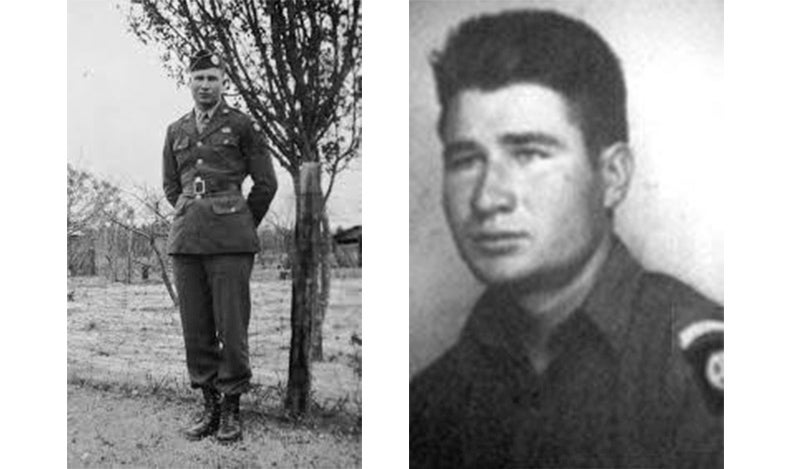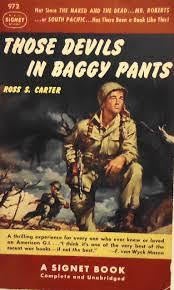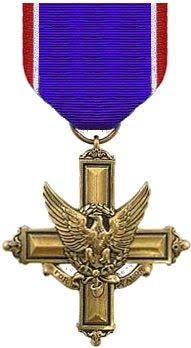Big Rodgers’ Socks The Story of Pfc. Thomas Lloyd Rodgers, U.S. Army, WW II, KIADistinguished Service Cross [Posthumous]
Published 1:00 pm Friday, June 9, 2023

- LEFT: PFC Thomas L. Rodgers, U.S. Army, WW II, Killed in Action during the Normandy Invasion. Awarded the Distinguished Service Cross posthumously. [Photo: Sherry Garner] RIGHT: PFC Thomas L. Rodgers, 504th Parachute Infantry Regiment, Pathfinder during D-Day. [Photo: Sherry Garner]
|
Getting your Trinity Audio player ready...
|
Author’s note: 79 years ago this week, more than 150,000 Allied soldiers landed on the beaches of Normandy, France, in the largest amphibious invasion in history. Within 24 hours, the beachheads had been secured but not before the deaths of some 9,000 men. One of those brave souls killed during the invasion was PFC. Thomas L. Rodgers of the Carolina Community in Covington County, Alabama. The following is his heroic story:
This is the story about a brave young man from just south of Andalusia in Covington County, Alabama. Thomas Lloyd Rodgers volunteered to join an elite Pathfinder Unit for the D-Day invasion. His gallant, courageous actions, prior to and during the invasion earned him the Distinguished Service Cross, our nation’s second highest honor. Had there been more witnesses other than those Germans killed by Rodgers, he might have been awarded the Medal of Honor. The award was presented posthumously.
The following note was found in the diary of a captured German officer who fought against the U.S. 504th Parachute Infantry Regiment at Anzio:
“American parachutists – devils in baggy pants – are less than one hundred meters from my outpost line. I can’t sleep at night. They pop up from nowhere and we never know when or how they strike next. Seems like the black-hearted devils are everywhere……”
Pfc. Thomas L. Rodgers was a member of the 504th Parachute Infantry Regiment.
His courageous actions made him a legend within the regiment and earned him a whole chapter in the book entitled, “Those Devils in Baggy Pants,” by Ross S. Carter. The book was later made into a movie of the same title. Lloyd Rodgers was affectionately known as Big Rodgers to the other soldiers in the regiment. He was a member of C Company, 1st Battalion, 504th Parachute Infantry Regiment of the legendary 82nd Airborne Division He was killed after parachuting into Belgium near the town of St. Mere Eglise in the early hours of June 6, 1944.
Thomas Lloyd Rodgers was born April 5, 1921, to John Thomas Evans and Eva Bass Evans of the Carolina community. Lloyd, as he was called, grew up in the area and attended Pleasant Home School. He was a star basketball player and was a Golden Gloves boxing champion after he joined the Army. He was called into service on Nov 25, 1940, when he joined the Alabama National Guard. Along with many others of the 117th Field Artillery Unit in Andalusia, Alabama, Lloyd trained at Camp Blanding, Florida and took part in maneuvers at Camp Bowie, Texas. Rodgers was selected for Airborne training at Fort Benning, Georgia. After completing advanced training at Fort Bragg, North Carolina, he received his parachute wings and was assigned to C Company, 1st Battalion, 504th Parachute Infantry Regiment.

The author’s copy of “Those Devils in Baggy Pants” by Ross S. Carter. An entire chapter in the book is devoted to the heroic actions of PFC Thomas L. Rodgers. The book was also made into a movie of the same name. [Photo: John Vick]
The 504th was a key element in the Army’s invasion of the Italian mainland. Rodgers made behind-the-lines, night-jumps at Salerno, Cassino and Anzio. Rodgers and the regiment continued fighting the Germans through the mountainous regions of Italy to the north.
After months of fighting the retreating Germans, the 504th was sent to England for rest and relaxation. It was there that they first heard rumors about a future invasion of Europe.
The 504th regimental commander asked for volunteers to form a Pathfinder Unit that would take part in the Normandy invasion. Rodgers was among the first to volunteer. One of his fellow troopers, David R. Berry made the comment, “Thomas L Rodgers was an exceptional soldier. In an Army where the phrase ‘Never volunteer for anything’ was common, he seemed to volunteer for everything.”
Lloyd Rodgers volunteered along with 24 of his fellow paratroopers. Ross S. Carter, the author of “Those Devils in Baggy Pants” and one of Rodgers’ comrades wrote, “Before they left, we gravely shook hands, a gnawing anxiety in our gizzards. Big Rodgers was a staunch pillar of our platoon, both morally and physically. When on outpost duty with him, I always had the feeling that things were well in hand.”
Rodgers and the Pathfinder Unit parachuted behind enemy lines, in the early morning hours of D-Day, to provide guidance for the 507th and 508th Regiments that were to be dropped behind the lines a little later.

The Distinguished Service Cross awarded to PFC Thomas L. Rodgers for his action during the D-Day invasion. The DSC is our nation’s second highest military honor after the Medal of Honor.[Photo: John Vick]
There are different dates given as to the time of Lloyd Rodgers death. Some account say that he died on D-Day, June 6, 1944, but other accounts list June 18. Rodgers would be remembered because of his actions before he died. What happened during that time made him a legend among the Pathfinders and the 82nd Airborne Division.
When Rodgers jumped, he carried a sawed-off Browning Automatic Rifle {BAR]. Quoting Ross Carter from his book, “During the battle near St. Mere Eglise, Big Rodgers killed 40 Germans with a sawed-off BAR before he went west… Before Big Rodgers left us in England for his jump, I told him, ‘Be careful T. L’. He hesitated as was his custom before answering, ‘I’ll be as careful as I can, Ross, but I may not be careful enough this time.’” Then he left. That evening we drank several bottles of ale and we toasted Big Rodgers on every bottle.”
Carter continued, “I feared the worst for Big Rodgers and our other buddies. My fears were justified. Of the 25 who volunteered, 17 were killed including Big Rodgers.”
For his heroic actions in battle, PFC Thomas Lloyd Rodgers was awarded our nation’s second highest honor, The Distinguished Service Cross. The citation reads:
CITATION FOR THE DISTINGUISHED SERVICE CROSS [Posthumous]
“Private First Class THOMAS L RODGERS, 20421704, Infantry, United States Army For extraordinary heroism in connection with military operations against an enemy of the United States. Having jumped into Normandy in the vicinity of AMFREVILLE, FRANCE on June 6, 1944, Private First Class Rodgers, observing many of his comrades pinned down by enemy machine gun and small arms fire, moved without hesitation to destroy the enemy. Mounting a stone wall, in full view of the enemy, he neutralized the machine gun position and proceeded forward, driving back the enemy with effective fire from his Browning Automatic Rifle. During this action, Private First Class Rodgers killed or wounded 25 of the enemy and made possible the organization and advance of our troops in the area. His personal courage, aggressive leadership and courageous inspiration contributed materially to the success of his comrades and typified the highest traditions of the service. Private First Class Rodgers was later killed in action against the enemy.”
Many of Rodger’s officers and fellow troops believed his actions on the battlefield, against such enormous odds, should have earned him the Medal of Honor. However, based upon the Army’s guidelines requiring more witnesses, he was awarded the Distinguished Service Cross instead.
Quoting further from Carter’s book, “The news of T. L.’s passing rolled gloom throughout the platoon thicker than London fog. At the same time, we felt the elevation of spirit that comes with the confirmation of trust well-placed. The giant had given a good account of himself.”
Carter continued, “After Big Rodgers’ death, a package arrived from his mother. Among its contents were several pairs of fine woolen socks. We distributed them among us and reserved them to wear only in battle. When we wore those socks, we had the feeling that Big Rodgers was with us in body as well as in spirit and could participate personally in his revenge.”
The legend of Big Rodgers’ socks continued for the duration of the war. In time, they became a good luck omen with the belief that anyone who wore those socks would return safely from battle.
Rodgers was also awarded the Bronze Star and the Purple Heart. The family of Lloyd Rodgers was devastated by his loss. His parents also had three other sons that served in the Navy during the war. They were John Thomas Evans Jr., Kenneth and Burton Rodgers. The Rodgers family also had a daughter, Sibyl Rodgers [Jacobs].
Pfc. Lloyd Rodgers was buried in France but eventually the family was able to have his body returned home and buried at the Carolina Baptist Church Cemetery.
John Vick
The author would like to thank Jim and Sherry Garner for their help in writing about Thomas Lloyd Rodgers. Sherry is the niece of Pfc. Rodgers.
[Sources used for this article include: “Those Devils in Baggy Pants” by Ross S Carter; The Andalusia Star-News article dated 1951; an article in the Star-News by Curtis Thomasson; U.S. Military Archives]





